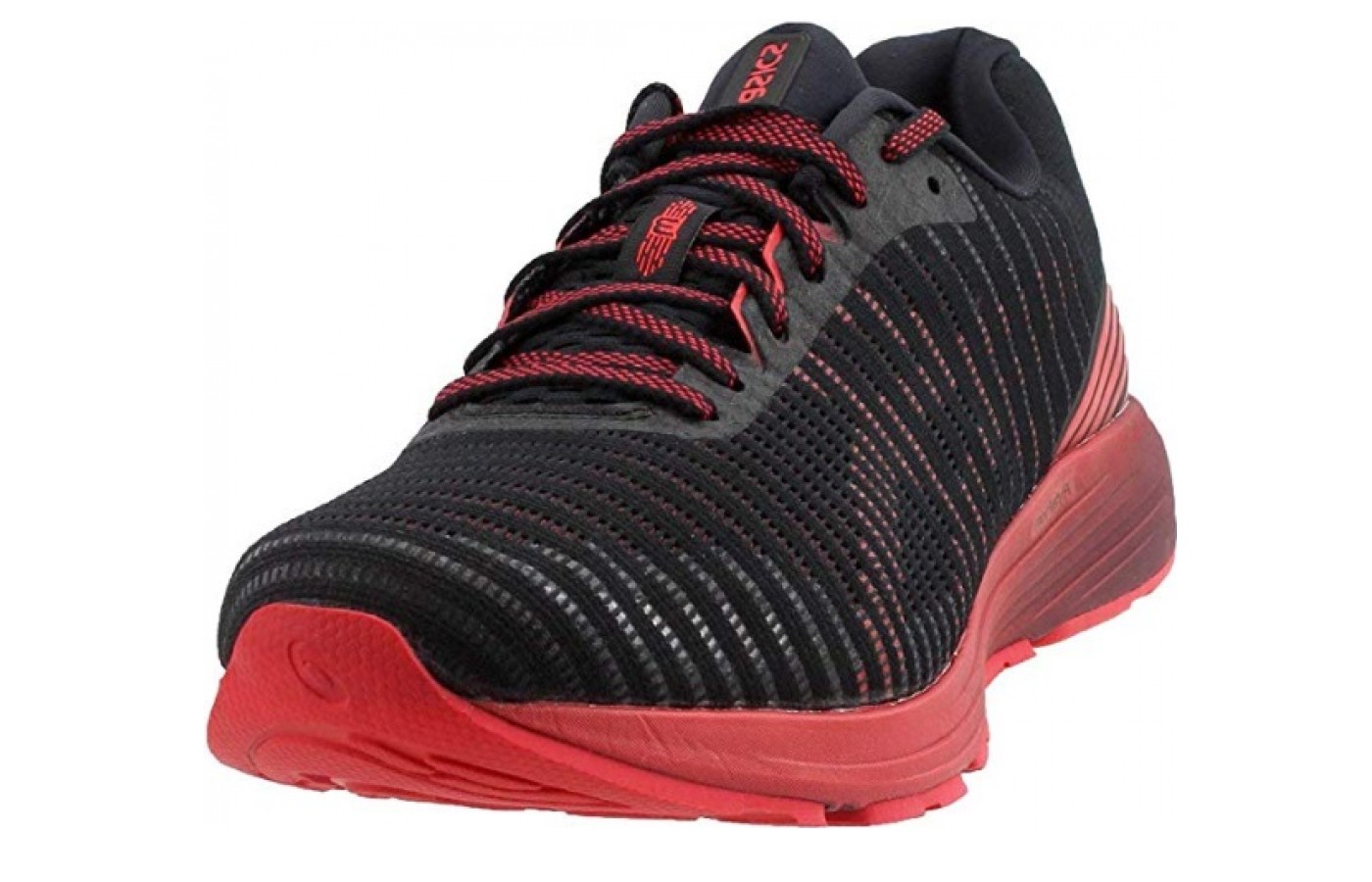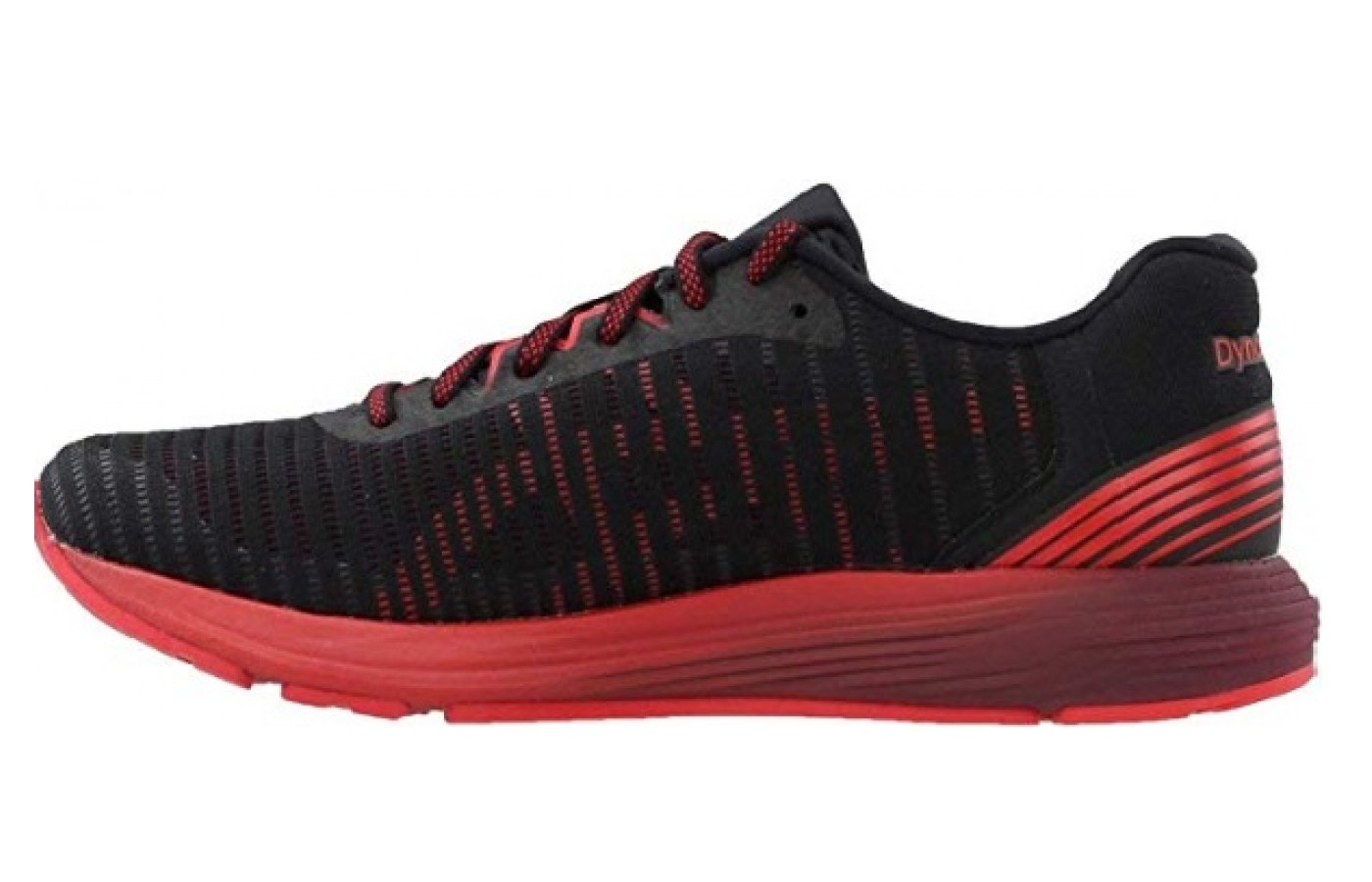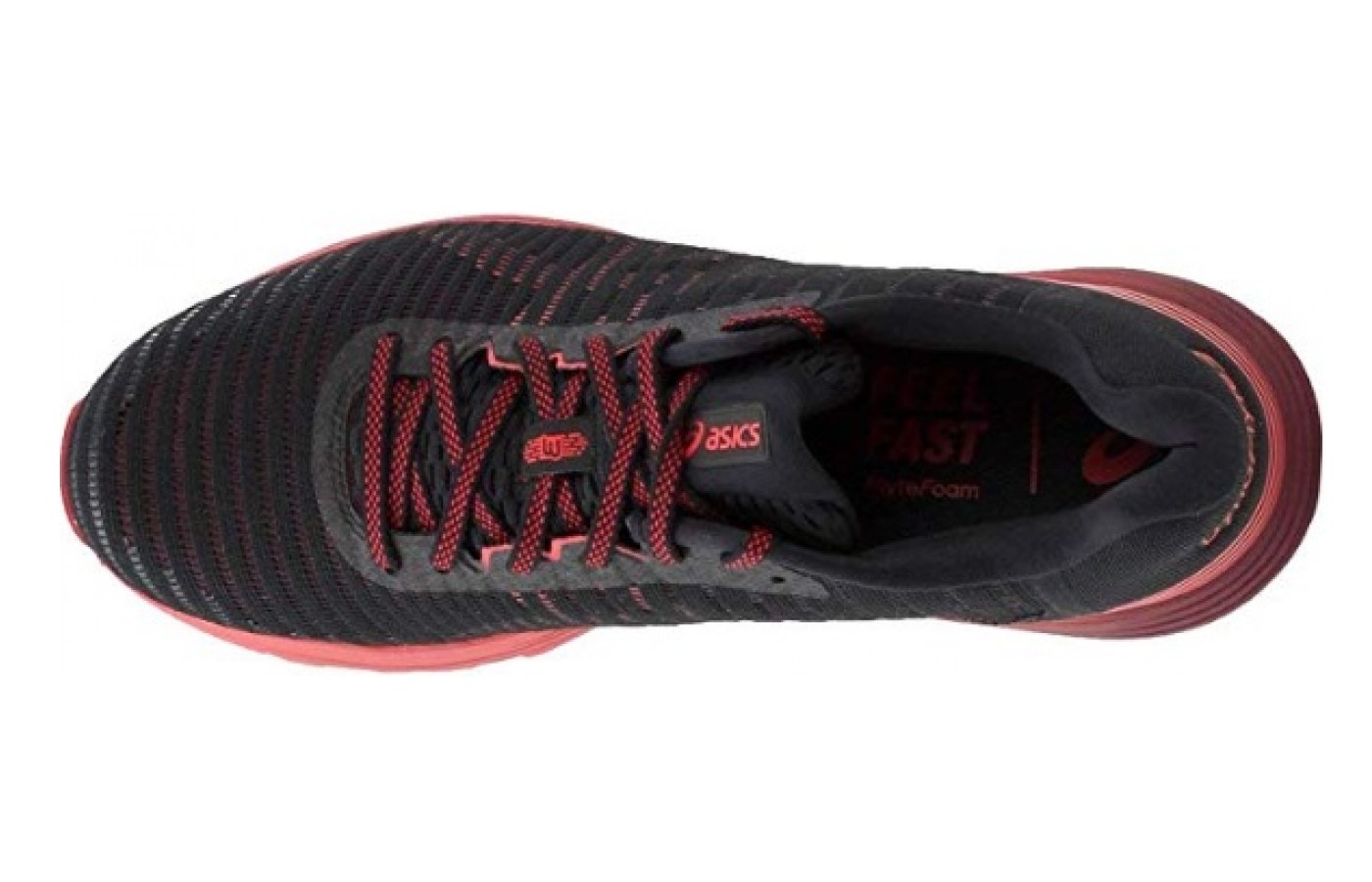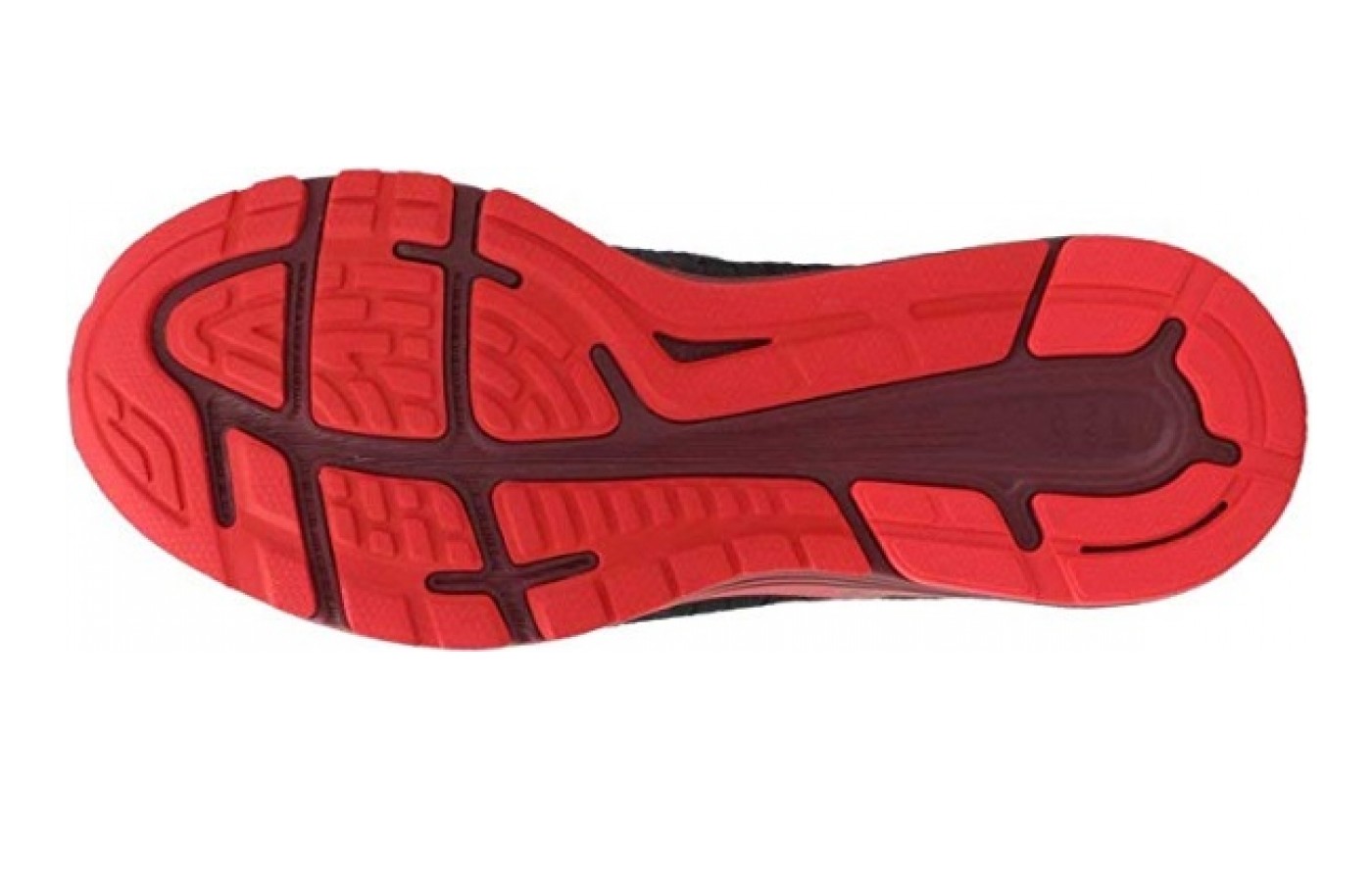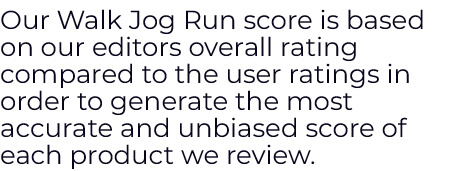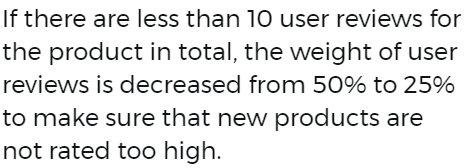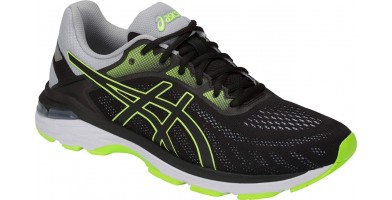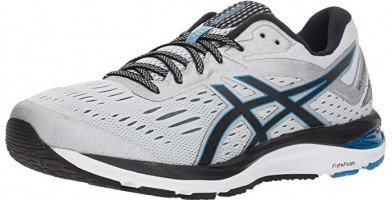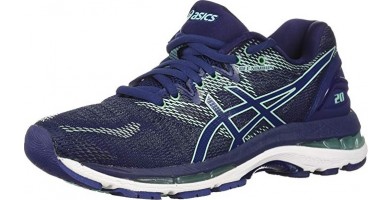For underpronators, finding the correct running shoe can become a daunting task at times. The Dynaflyte 3, by ASICS, is an item that utilizes their signature IGS (Impact Guidance System) to help address this. With such a wonderful concept, this footwear has caught our attention and we set out to investigate the pros and cons. Will this pair stand up to the challenge? We hope so! After all, not all of us has neutral feet; contrary to the mass production of neutral running footwear on the market today. It is nice to envision, and even more so, put into practice, such a wonderful and amazing solution to an obvious problem. So, without further ado, let's examine the Dynaflyte 3 once and for all!
Aesthetics
We love this design and how ASICS has chosen to utilize color contrasting. Not only are these built for treadmill and road running, but the aesthetics work well in allowing you to stand out. This, in turn, gives us peace of mind in knowing that we are viewable to motorists a bit more while enjoying our run on road-type surfaces. In addition, the mesh upper pops with a modern feel, as overlays allow the signature design to peep through with a sense of fashion shyness. Furthermore, with the right choice in color variations, the outsole highlights this effect with a bold cry. Maybe, through our example, others will feel compelled to take on our passion, too! It's as if we are able to happily show off the joys of running without uttering a single word. We can allow our leadership and the footwear to do all of the talking with each stride taken.
Airflow
When evaluating airflow, we examine the product as a whole, but more specifically, the upper and sockliner. This is because these two components together surround the foot and space, thereof. When the air becomes trapped, the feet cannot breathe. A thick,
leather upper, for example, has low breathability when compared to a mesh upper. For runners, we need
high breathability. After the first lunge forward, it takes very little time for our body to heat up astronomically. This includes our feet. In a non-breathable environment, this can lead to major swelling, and possibly even worse, lead to ailments; such as
athlete's foot and the like. Thankfully, however, the Dynaflyte 3 excels in this area. The mesh upper is present and in full working order. Furthermore, the sockliner has moisture management properties and provides a breathable environment, as well. Two thumbs up are in order for this part of the design!
Comfort
Comfort is one of the first attributes we notice after wearing a new pair of footwear for a time. We were a little nervous about this particular product, as it is the answer to supination for another model which is built for neutral runners. That model was an utter disaster, to say the least. Well, when it comes to comfort, anyway. This model, however, seems to have employed a different solution in the midsole; albeit, it is of the same design. Yes, it is more rigid than we expect, but when it is all said and done, this rigidity doesn't cause mass amounts of pain. These are built for those who underpronate. They are not, however, a medical solution to relieve ailments related to high arches, such as
plantar fasciitis and etc. Secondly, these do seem to have a bit of a break-in period prior to running long distances. If they are not broken in, first, then the heel is known to cause blistering. And as we all know, blisters curb our passion for running with fierce prejudice. Lastly, with a little care to breaking these in and the understanding that these are not a medical solution in relieving health-related ailments, we are able to asses that this product does score in the medium range for comfort. And although they may not be the highest rated in this department, they are a much better solution than wearing the wrong footwear for the pronation type.
Drop
These have an 8-millimeter
heel-to-toe drop. Remember, these are for those with supination; so, the drop will feel differently than a standard 8-millimeter drop for those having neutral pronation. The midfoot area supports high arches, and as such, this drop will focus more on aiding those with supination, rather than placing all of the focal points on midfoot striking. This drop is a good choice for this build. It allows the other components of the footwear to work in unison for the purpose in which they are intended. Furthermore, after the break-in period passes us by, the 8mm HTT (heel-to-toe) drop feels a whole lot better during longer runs. As such, the chosen drop for this item is a perfect choice and we are quite impressed with the overall results.
Durability
From a glance, these appear as though they will fall apart after some heavy usage in a short amount of time. Strangely enough, the opposite is true. This is because the mesh upper has quite a bit of flexibility which associates to it, and therefore, the foot does not strain against the fabric. Instead, after the break-in period passes, these conform to an individual's foot. This leads to extended longevity. As such, the
durability factors rise and these will last well past the amount spent on purchasing the item. Not only does this attribute make the product more attractive, but it causes this pair to be a practical choice when choosing running footwear for those having underpronation. We love the durability factor and these receive high marks, as a result. Good job, ASICS!
Fit
If you are not an underpronator, do not buy these. If you do, the fit will feel terrible. These have a specific design for a specific purpose. With that being stated, for those with supination, these are wonderful in the fitting department. And although ASICS, generally, run small, this particular item is true to size. The overall component list creates an environment for a personalizing experience. These conform to your feet in a personal way. As such, the more you wear them, the more they will shape to you, as an individual. There are three things to remember when it comes to this fit. First, you must be an underpronator or they are not for you. Second, there is a break-in period which must be considered. Lastly, do not buy a half-size up, as you would normally do with ASICS. Follow these simple guidelines and you will benefit greatly. After all, a good fit does matter.
Responsiveness
There are multiple components contributing to the responsiveness attribute. Everything from the AHAR (ASICS High-Abrasion Rubber) outsole to the Ortholite X-40 sockliner, plays its part within this idea. The midsole, however, is where we want to focus in on. This is the part which takes the brunt of our impact and will dictate whether or not we have an energy return, as a result. At least, this is the main place that will either enhance the other components or cause them to fail. ASICS utilizes its Flytefoam Lyte technology within the midsole. Basically, it is a series of reinforced fibers which are responsible for handling impact and returning energy. Some people may refer to this as 'bounce back.' Here, we find that the 'bounce back' factor grades above average. It is not the highest on the market, but it is, also, not a considerable loss, either. Most importantly, what we need to realize (in this scenario) is that this design is for supination. Those who underpronate already have a certain amount of springiness to their step, as it were. This is why there are so many medical conditions which can form, as a result of the pronation type in question. So, with that being said, the 'bounce back' feature is, indeed, a good choice, mathematically speaking. It rates around a B+ when compared to all other styles on the market, but is perfect for supination.
Speed
On your mark, get set, go! Although better for training, these can have a deployment in actual competition, too. They are lightweight (9.07 oz.) and have a good durability attribute, as well. In addition, these conform to the foot. In the short term, these will need to be broken in prior to any racing but will hold major benefits in the long-run. For underpronators, you will find precious seconds shaved from your normal times after the break-in period passes. This is because the footwear caters to your pronation type and enhances the gait cycle, accordingly. Next, with the conforming factors present, the more these are worn, the more they become part of your feet. In a sense, this introduces the effect of becoming an extension of the body, and not an item that we are just wearing, so to speak. At the end of the day, speed does increase when we compare those underpronators wearing these versus footwear not built specifically to their needs. This means that the serious runner should consider these if those seconds matter to them.
Support
Most of the time, those of us with high arches must go through a process of finding footwear which is tolerable to us. After which, we shop around to find the best insole that caters to our needs, and with the two in hand, we now have a pair of running shoes which 'kinda' works for us, as individuals. One of the bright points with ASICS is that, as a company, they are constantly working to cater to everyone's pronation type. And although the technologies may crossover from one style to the next, it is the subtle differences they make which help their footwear to stand out. With this particular model, ASICS made subtle changes to the midsole, HTT drop, and overall structuring in the upper to advance this item for underpronators. It supports high arches and does so in a grand fashion. Moreover, the overall feeling of the foot is positive and the support levels are what we would expect. As such, support grabs high marks and we are proud to say so.
Traction
ASICS utilizes its AHAR (ASICS High-Abrasion Rubber) outsole. In a basic sense, it is a special rubber that is strategically placed at points of interest. These interest points, as it were, are places of high impact and pressure-related areas during the gait process at the bottom of the foot. Not only does this increase outsole durability but it, also, serves to smooth out the ride, so to speak. For this particular model, the traction is set up for the treadmill and/or road running. Any off-road attempts will compromise the build, so we strongly encourage that these be employed with the design they are meant for. More importantly, the traction will be lacking with
off-road adventuring. But with all of that said, for what they have the design for, the traction excels. Furthermore, with the flex grooves in place, these do provide a seamless feel during a run. As such, the traction gets a high rating, as it is well deserving.
Bottom Line
After careful consideration and examination of the components within, we find that this model stands up to our initial expectations. It caters to those with underpronation and does so in an amazing fashion. It supports high arches, as it should. And the overall design aids with the gait cycle during extended runs. The sizing is true and the conforming features are great. In addition, the outsole and upper are durable, yet flexible. In fact, the only downsides we found was in the realm of the midsole and the break-in period. The midsole is a bit rigid, but not overly so. Over time, however, after the break-in period passes, the rigidity seems to work with the foot and not against it. In the short term, this is a negative. But in the long-run, and after it is all said and done, there are observable positive elements with the overall design. As such, we love this product and for the intention of why it was built: to help underpronators enjoy their passion more than ever before.





